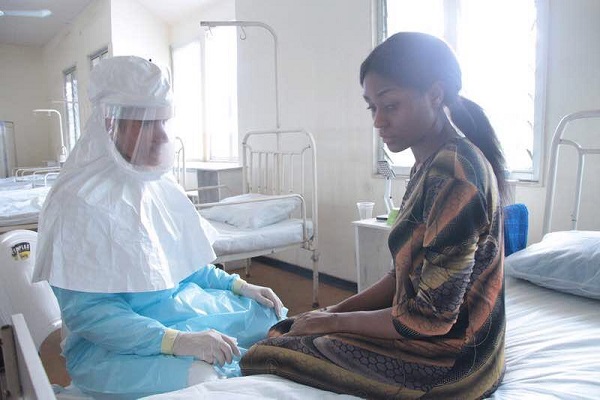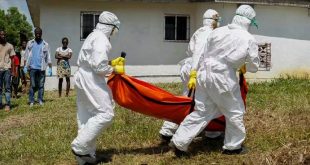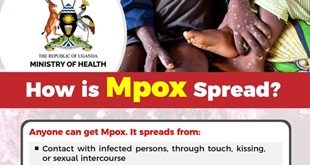
Paris, France | AFP | Scientists said Thursday they have developed a vaccine to shield endangered chimpanzees and gorillas against Ebola, which has wiped out tens of thousands of the wild apes in three decades.
The vaccine is given orally, the developers said, which means it could be disguised in food and left out for the animals to eat — easier and less traumatic than darting.
“Our closest relatives are being driven rapidly towards extinction by diseases like Ebola, by commercial bushmeat hunting and by habitat loss, and for a lot of this we are responsible,” said Peter Walsh of the University of Cambridge, who took part in the research.
“We now have this technology that can help save them, and there is a moral obligation that we should do it,” he told AFP.
In laboratory tests with ten chimpanzees, the vaccine — dubbed filorab1 — was shown to be safe and to generate “a robust immune response” to the Ebola virus, researchers reported in the journal Scientific Reports.
Walsh is now developing a system for putting the vaccine into bait that apes will eat in the wild. Only then can the vaccine be rolled out, to gorillas first and chimps later.
Ebola was first identified in what was then Zaire — now the Democratic Republic of Congo — in 1976.
Since then, there have been several outbreaks of the disease which is deadly to all members of the primate family, including humans. A vaccine that works on one primate species is likely to be effective for them all.
Ebola “has already killed about a third of gorillas in the world,” said Walsh — amounting to “tens of thousands” of animals.
Gorillas and chimps tend to live in densely forested areas, and are extremely shy of humans — making their population numbers hard to track.
“When there is an outbreak in a local area, 95 or 90 percent of the gorillas die,” said Walsh.
For chimpanzees, the number of Ebola deaths is even more obscure, but likely “in the low tens of thousands,” he added.
Most gorillas live in an area covering parts of Gabon, Cameroon, Congo, Central African Republic, Guinea and DR Congo, while chimps are more widely spread across the continent.
Without an Ebola vaccine, argued Walsh, the world will end up with “a few little remnant populations” of chimps and gorillas.
“We need to do it for our cousins in the wild,” he said of a vaccine rollout.
It would have the added benefit of protecting humans — many of whom have caught the deadly Ebola virus from eating infected apes.
For humans, at least 15 Ebola vaccines are being designed by laboratories worldwide — one of which the World Health Organization said last December may be “up to 100 percent effective” and could be available in 2018.
More than 11,300 people died in the latest epidemic, the largest in history, which started in West Africa in 2014.
The chimp trial was conducted at the University of Louisiana Lafayette’s New Iberia Research Center before the United States ended captive chimpanzee biomedical research programmes, now banned in all developed countries.
Despite exceptions for veterinary emergencies or research for species conservation, there are no labs with captive chimps left, said Walsh.
This means, in effect, that the vaccine will have to be given to live animals in the wild to determine the best dosage, he explained — a more complicated endeavour.
“We have to use… non-invasive methods like we have to get antibodies from faeces” rather than draw and test blood to determine whether or not the vaccine worked, he explained.
Safety standards for testing animal vaccines are much less onerous than for humans.
Walsh lamented that well-meant efforts to boost animal welfare may have the unintended consequence of hampering vaccine development and “causing deaths in the wild.”
The vaccine, for which a human version also exists, is based on an existing rabies innoculation. Its development for human use was funded largely by the United States government, said Walsh, then adapted for apes.
 The Independent Uganda: You get the Truth we Pay the Price
The Independent Uganda: You get the Truth we Pay the Price


